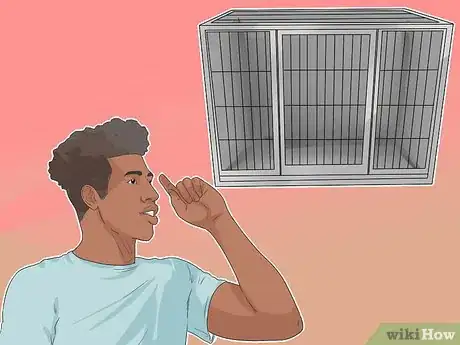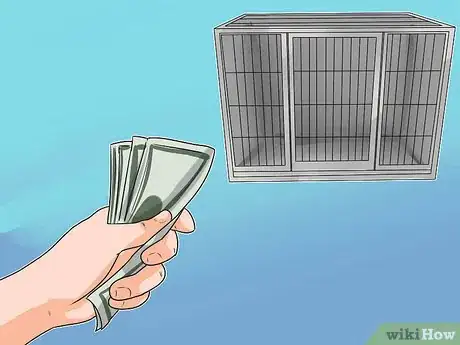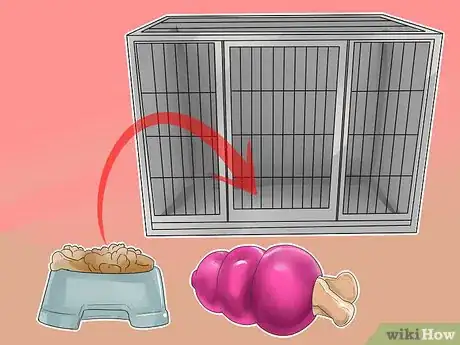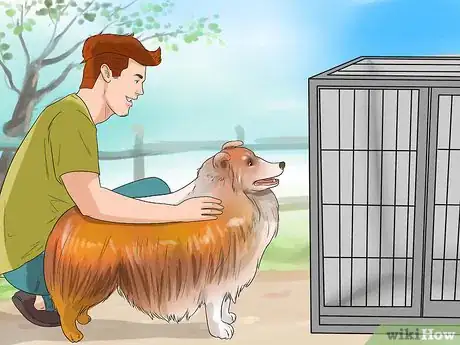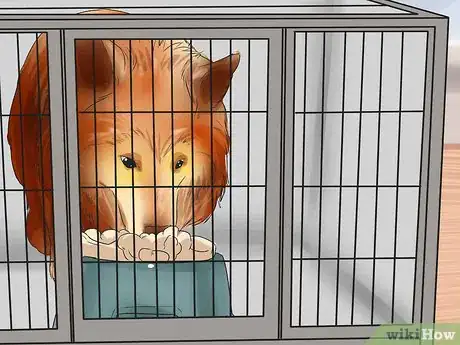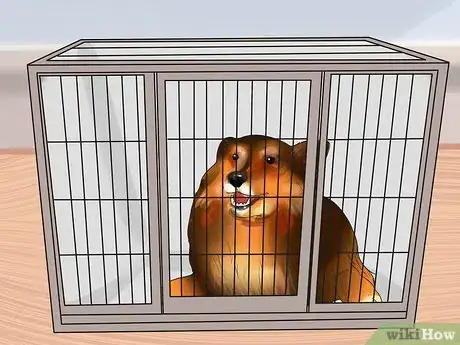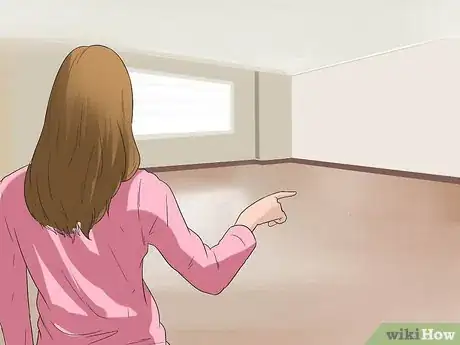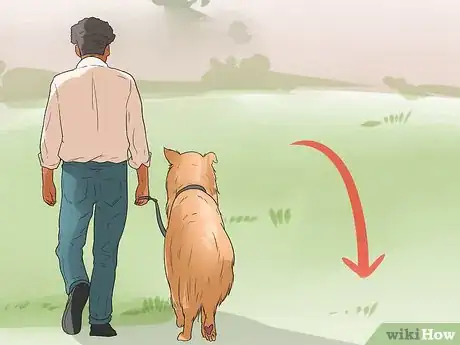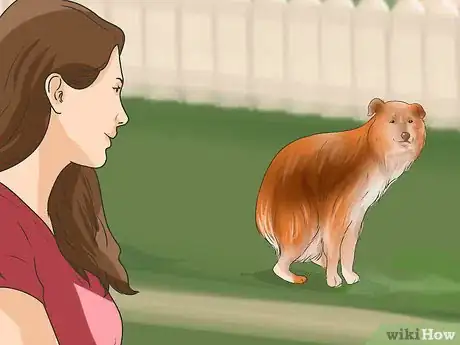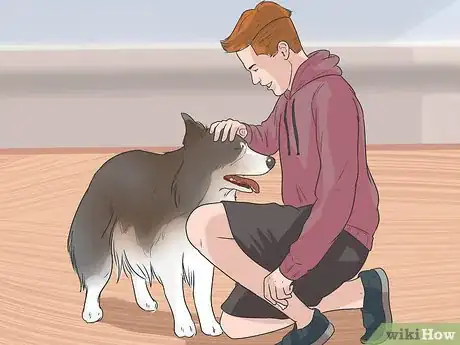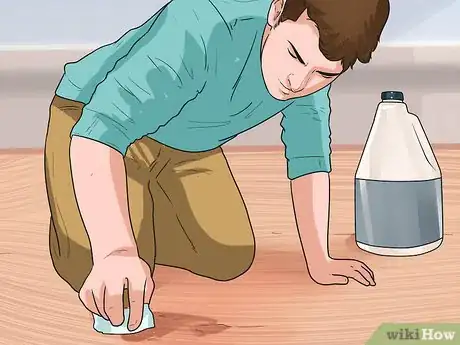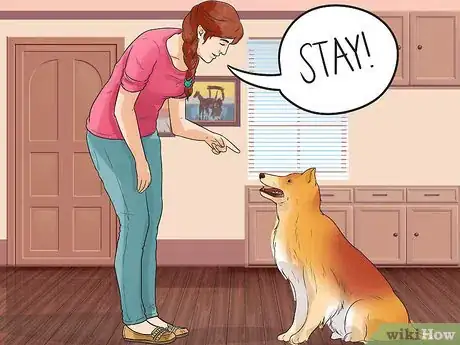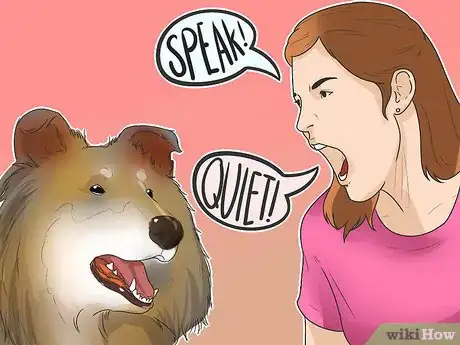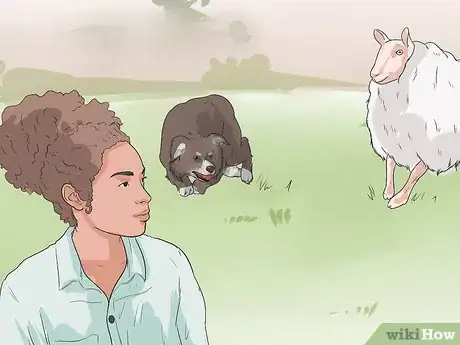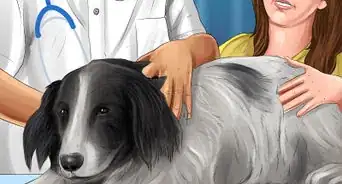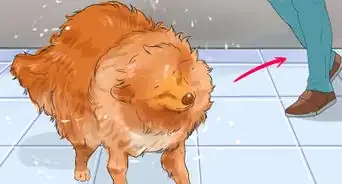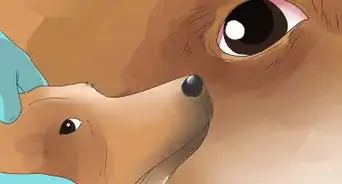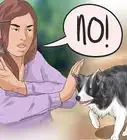This article was co-authored by Brian Bourquin, DVM. Brian Bourquin, better known as “Dr. B” to his clients, is a Veterinarian and the Owner of Boston Veterinary Clinic, a pet health care and veterinary clinic with three locations, South End/Bay Village, the Seaport, and Brookline, Massachusetts. Boston Veterinary Clinic specializes in primary veterinary care, including wellness and preventative care, sick and emergency care, soft-tissue surgery, dentistry. The clinic also provides specialty services in behavior, nutrition, and alternative pain management therapies using acupuncture, and therapeutic laser treatments. Boston Veterinary Clinic is an AAHA (American Animal Hospital Association) accredited hospital and Boston’s first Fear Free Certified Clinic. Brian has over 19 years of veterinary experience and earned his Doctor of Veterinary Medicine from Cornell University.
There are 18 references cited in this article, which can be found at the bottom of the page.
This article has been viewed 31,924 times.
Shelties (Shetland Sheepdogs) are intelligent, energetic, and loving dogs.[1] Their intelligence and eagerness to please can make them easy to train. However, shelties can also be too smart for their own good and a little stubborn, so you might have to work a little harder to keep your own sheltie motivated and focused during his training.[2] With time and patience, you will be able to train your sheltie and help him become a well-behaved and loyal family member.
Steps
Crate Training Your Sheltie
-
1Learn the benefits of crate training. Crate training will have several benefits . For example, it will allow your sheltie to see the crate as a place of safety and comfort.[3] In addition, crate training will make it easy to transport him when it’s time to go to the vet. Crate training will also keep your sheltie in a confined and comfortable space until he understands the house rules.
- At the end of crate training, your sheltie will have a place to call his own in your home.[4]
-
2Purchase a crate. Several types of crates are available. Airline-approved crates are ideal because they are very sturdy; inquire at your local pet store about this type of crate.[5] A collapsible fabric crate would not be a good choice, since your sheltie could make it collapse when you’re not watching him. Choose a crate in which he could stand up and lie down comfortably, but not have enough space to create a separate bathroom area.
- A good-sized crate for shelties is 30 inches long x 21 inches wide x 24 inches high (76 cm x 53 cm x 61 cm).[6]
Advertisement -
3Make the crate comfortable. The more comfortable and cozy you make the crate, the more likely your sheltie will want to spend time inside of it. Put some of his favorite toys inside the crate, along with some food puzzle toys (e.g., Kong toys). Consider placing a blanket or some towels over the crate to give it a cozy, den-like feel.[7] In addition, place a comfortable blanket inside the crate on which he can lie.[8]
- Along with his food bowl, choose a sturdy and spill-proof water bowl to go inside the crate.
- Place the crate in an area of your home with a lot of human activity, such as the family room.[9]
-
4Introduce your sheltie to the crate. Your sheltie may quickly and happily trot into the crate on his own, or he may need some time and extra coaxing. When you bring him over to the crate the first time, talk to him in a bright and cheery voice. If he still seems a little hesitant, entice him with food: place a few bits of food just outside the crate at first, then put the food further and further into his crate until your sheltie walks all the way in.
- An adult sheltie may not be so keen on entering the crate, especially if he’s spent his whole life outside of a crate. He will probably need some extra time warming up to the idea of crate training.[10]
- Do not force or push your sheltie into the crate. He will enter the crate when he is ready, so work at his pace.
- Keep the crate door open so your sheltie can enter and exit the crate when he chooses.
-
5Feed your sheltie inside the crate. When your sheltie is comfortable entering the crate, begin feeding him his meals in the crate. While he’s munching on his food, gently close the door behind him. Open the door when he finishes eating. After each meal, leave the door closed for gradually longer periods of time.
- If he whines, wait until he stops whining to open the door. You don’t want him to learn that whining is his way to get out of the crate when the door is closed.
-
6Leave your sheltie in the crate for increasing periods of time. At the end of crate training, your sheltie should be able to stay in the crate for several hours at a time, including overnight.[11] To work up to this, close the crate door when he goes inside (outside of meal time), leave the room, and return to the crate at random time intervals.[12]
- Give your sheltie a verbal command (e.g., ‘kennel,’ ‘crate’) to enter the crate. Give him verbal praise and a treat as soon as he goes inside the crate.
- Practice leaving him in the crate when you leave home. Leave and come back without fanfare so you don't create high levels of anxiety or anticipation.
- Remember that puppies cannot hold their bladders for very long. For example, a 4-month old puppy can only hold his bladder for about 4 hours. Whether puppy or adult, do not leave your sheltie crated for more than 6 hours at a time, unless you crate him overnight.
House Training Your Sheltie
-
1Keep your sheltie in a confined area of your home. When you begin house training your sheltie, keep him in a small room (e.g., bathroom) or a small area of a larger room (e.g., kitchen) where the floors are easy to clean.[13] Place a puppy pee pad in that area so your sheltie has a place to eliminate if you are gone for long periods of time. When he becomes house trained, he can have access to more areas of your home.[14]
- Be aware that using a pee pad can make it challenging to encourage your sheltie to eliminate only outside.
-
2Choose an outdoor area where your sheltie can eliminate. If you have a backyard, take your sheltie to an area that is relatively protected from the elements (e.g., wind, rain).[15] Let him choose the specific elimination spot in that area. Once he leaves his scent there, he will go to that spot each time you take him outside.[16]
- If you do not have a backyard, consider choosing an open area where he could eliminate during his walk. Make sure this area is not on someone else’s private property, and clean up his feces promptly.
-
3Take your sheltie outside on a regular schedule. House training will be a lot easier when your sheltie knows when he is expected to go to the bathroom. If you have a sheltie puppy, take him out after he wakes up, eats, or drinks water.[17] You should also let him eliminate before he goes to bed and whenever you let him out of the crate.[18]
- Adult dogs do not need to go out as frequently as puppies, but should still be on a set schedule. For example, take your adult sheltie out after each meal.
-
4Praise your sheltie when he eliminates outside. Since shelties are eager to please, your sheltie will need your verbal praise and approval (‘good dog!’ or ‘good job!’) when he eliminates outside.[19] When he gets positive feedback from you, he will associate eliminating outside with a reward, making him more likely to repeat the same good behavior.
-
5Clean up accidents without punishing your sheltie. If your sheltie has an accident in the house, clean it up without fanfare or punishment. Use an enzymatic cleaner (without ammonia) that will eliminate the urine scent so he does not have an accident in that same area.[20] If you can, keep him out of the room so he doesn’t see you clean up the accident; if he sees you, he may think it’s okay to eliminate inside the house.[21]
- Do not punish your sheltie! Whether or not you witnessed the accident as it happened, rubbing his nose in the urine or feces will not discourage him from having another accident. It will only make him fearful of you.[22]
Teaching Your Sheltie Commands
-
1Train your sheltie to follow basic commands. Shelties are very smart and intelligent, so it probably won’t take long for your sheltie to learn basic commands. They can frequently learn a command the first time it is given.[23] Basic commands to teach your sheltie include sit, stay, come, and heel.
- Consider enrolling your sheltie in an obedience class to teach him basic commands. Don’t be surprised if he ends up being at the top of the class!
- Once your sheltie masters one command, move on to the next one. Your sheltie will become bored if you keep practicing a command he’s already mastered.
- Challenge him with different tricks and commands, like playing dead and giving you his paw.
-
2Manage your sheltie’s barking. Your sheltie’s natural protectiveness may cause him to bark a lot. A sheltie’s bark can be loud and piercing, so you should train your sheltie not to bark so much. This training will involve you first commanding him to bark (‘speak’), then to be ‘quiet.’[24] These two commands will allow you to control when your sheltie barks.
-
3Enroll your sheltie in agility training. Your sheltie’s intelligence and high energy level makes him a great candidate for agility training. Agility training involves jumping, climbing, and navigating over obstacles. It will keep your sheltie physically active and mentally stimulated.[25] Ask your veterinarian or other sheltie owners for recommendations on nearby agility training courses.
-
4Consider enrolling your sheltie in herding training. Shelties have a strong herding instinct. If you live on a farm, you may want to hone your Sheltie’s herding abilities. Be aware that your sheltie may have to first pass an ‘instinct test’ to ensure he has the instinct to herd, rather than chase, animals.[26]
- Search for herding training clubs in your area.
- You can also teach your sheltie to herd on your own.
- Do not encourage herding behavior if you do not live in an environment that requires herding. For example, if you have kids, don’t have your sheltie herd them—this could lead to your sheltie biting your kids.[27]
Expert Q&A
-
QuestionAre shelties easy to train?
 Brian Bourquin, DVMBrian Bourquin, better known as “Dr. B” to his clients, is a Veterinarian and the Owner of Boston Veterinary Clinic, a pet health care and veterinary clinic with three locations, South End/Bay Village, the Seaport, and Brookline, Massachusetts. Boston Veterinary Clinic specializes in primary veterinary care, including wellness and preventative care, sick and emergency care, soft-tissue surgery, dentistry. The clinic also provides specialty services in behavior, nutrition, and alternative pain management therapies using acupuncture, and therapeutic laser treatments. Boston Veterinary Clinic is an AAHA (American Animal Hospital Association) accredited hospital and Boston’s first Fear Free Certified Clinic. Brian has over 19 years of veterinary experience and earned his Doctor of Veterinary Medicine from Cornell University.
Brian Bourquin, DVMBrian Bourquin, better known as “Dr. B” to his clients, is a Veterinarian and the Owner of Boston Veterinary Clinic, a pet health care and veterinary clinic with three locations, South End/Bay Village, the Seaport, and Brookline, Massachusetts. Boston Veterinary Clinic specializes in primary veterinary care, including wellness and preventative care, sick and emergency care, soft-tissue surgery, dentistry. The clinic also provides specialty services in behavior, nutrition, and alternative pain management therapies using acupuncture, and therapeutic laser treatments. Boston Veterinary Clinic is an AAHA (American Animal Hospital Association) accredited hospital and Boston’s first Fear Free Certified Clinic. Brian has over 19 years of veterinary experience and earned his Doctor of Veterinary Medicine from Cornell University.
Veterinarian Any dog can be difficult to train, but it may be easier to reward your sheltie with treats when it behaves.
Any dog can be difficult to train, but it may be easier to reward your sheltie with treats when it behaves.
Warnings
- A sheltie with an uncontrolled herding instinct may chase after cars, increasing his risk of serious injury.[30] If you do not have an enclosed yard, consider keeping your sheltie on a leash each time he goes outside.⧼thumbs_response⧽
- Shelties can suffer from separation anxiety. Proper crate training can lessen this anxiety. However, if your sheltie’s separation anxiety causes him to be destructive or whine incessantly, contact your veterinarian or a veterinary behaviorist for help.⧼thumbs_response⧽
References
- ↑ https://www.petcarerx.com/article/training-your-shetland-sheepdog/460
- ↑ http://dogtime.com/dog-breeds/shetland-sheepdog#/slide/1
- ↑ Brian Bourquin, DVM. Veterinarian. Expert Interview. 20 December 2019.
- ↑ http://www.canadianshelties.ca/YourNewPuppy.htm
- ↑ http://www.canadianshelties.ca/YourNewPuppy.htm
- ↑ http://www.dog.com/content/pet-tips/measuring-your-dog-for-a-crate/
- ↑ http://www.canadianshelties.ca/YourNewPuppy.htm
- ↑ http://www.petmd.com/dog/puppycenter/potty-training/evr_dg_crate_training_for_puppies
- ↑ https://www.animalhumanesociety.org/training/crate-training-your-puppy
- ↑ http://www.petmd.com/dog/puppycenter/potty-training/evr_dg_crate_training_for_puppies#
- ↑ http://www.humanesociety.org/animals/dogs/tips/crate_training.html
- ↑ https://www.pbrc.net/crate-training.html
- ↑ Brian Bourquin, DVM. Veterinarian. Expert Interview. 20 December 2019.
- ↑ http://everythingsheltie.com/housetraining.html
- ↑ https://www.petcarerx.com/article/english-bulldog-care-and-training-facts/292
- ↑ http://www.bostonterrierforums.com/training/house-training-your-boston-terrier
- ↑ http://everythingsheltie.com/housetraining.html
- ↑ http://www.akc.org/learn/akc-training/how-to-potty-train-a-puppy/
- ↑ http://www.peteducation.com/article.cfm?c=21+1276&aid=157
- ↑ http://www.akc.org/learn/akc-training/how-to-potty-train-a-puppy/
- ↑ http://www.petmd.com/dog/puppycenter/potty-training/evr_dg_how_to_prevent_puppy_accidents
- ↑ http://www.humanesociety.org/animals/dogs/tips/housetraining_puppies.html
- ↑ http://dogtime.com/dog-breeds/shetland-sheepdog#/slide/1
- ↑ http://www.humanesociety.org/animals/dogs/tips/how_to_stop_barking.html
- ↑ https://www.petcarerx.com/article/training-your-shetland-sheepdog/460
- ↑ https://www.petcarerx.com/article/training-your-shetland-sheepdog/460
- ↑ http://dogtime.com/dog-breeds/shetland-sheepdog#/slide/1
- ↑ Brian Bourquin, DVM. Veterinarian. Expert Interview. 20 December 2019.
- ↑ http://dogtime.com/dog-breeds/shetland-sheepdog#/slide/1
- ↑ https://www.petcarerx.com/article/training-your-shetland-sheepdog/460
About This Article
To house train your sheltie, take it outside on a regular schedule, such as after it wakes up, eats, and drinks water, so it doesn’t have an accident. You should take it out to the same place, like your backyard, each time so it recognizes that this is where it's supposed to go to the bathroom. To encourage your sheltie further, give it plenty of praise every time it eliminates outside. Remember, if your sheltie does have an accident in the house, don’t punish it, as this will just make it afraid of you and won’t help house train it. Instead, simply clean up the area with an enzymatic cleaner that’s safe for pets so it doesn’t have an accident in the same area again. To learn how to teach your sheltie commands, read more from our Veterinary co-author!
